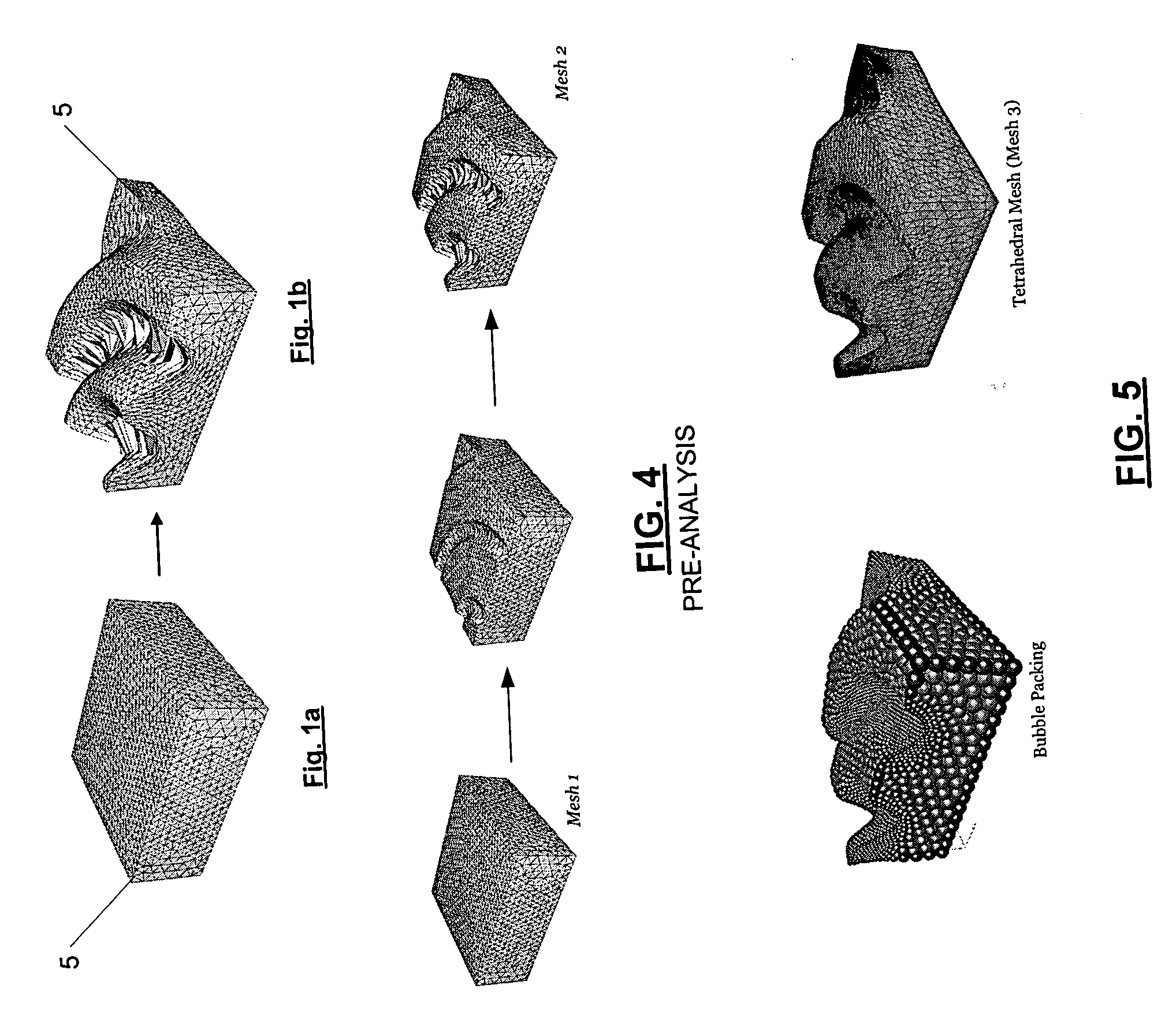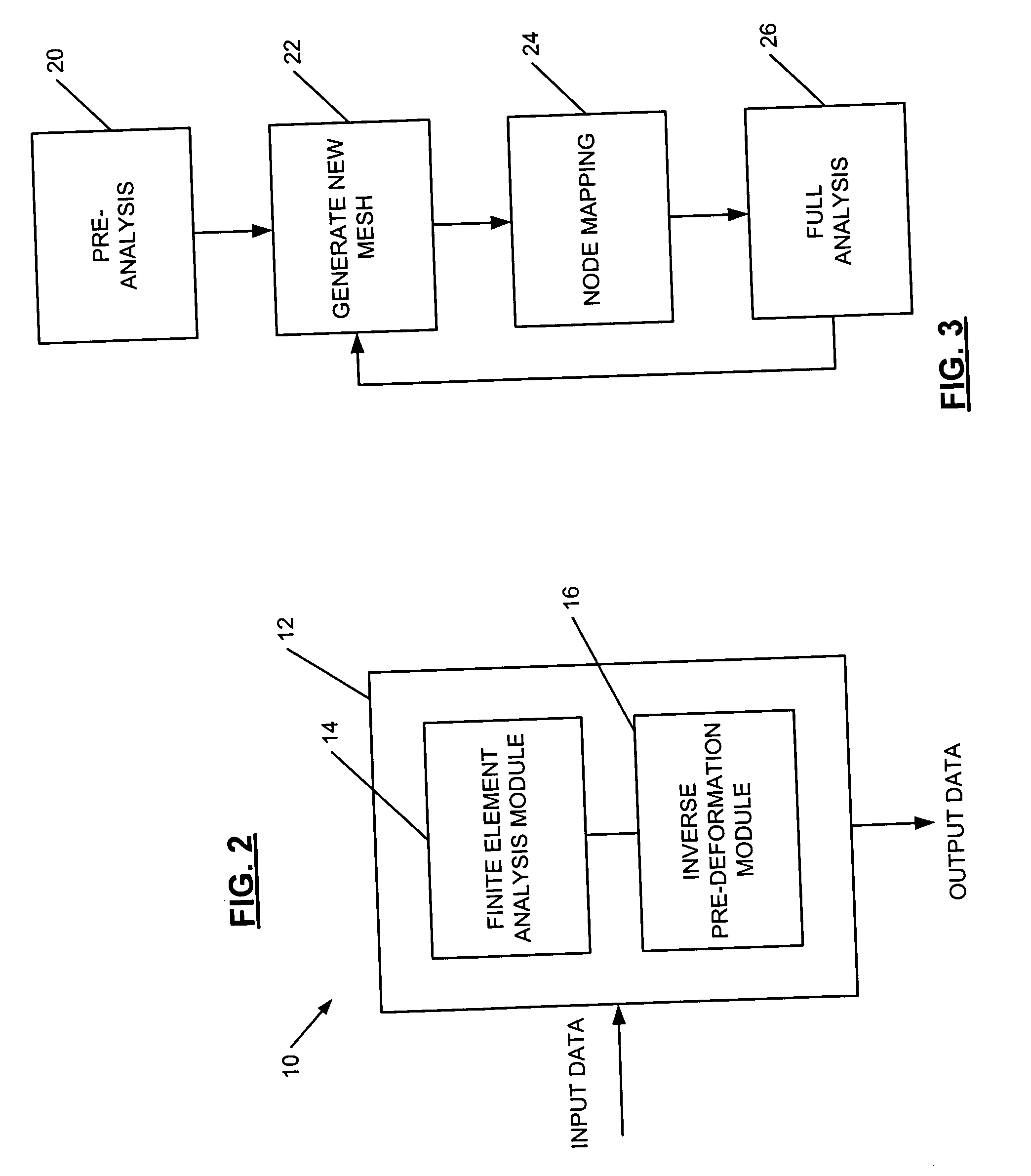System and method for deformation analysis using inverse pre-deformation of finite element mesh
a technology of finite element mesh and pre-deformation, applied in the field of deformation analysis, can solve the problems of insufficient supply and deformation of shape quality, and achieve the effect of reducing the number of inverted and ill-shaped elements generated when using the deformed input mesh
- Summary
- Abstract
- Description
- Claims
- Application Information
AI Technical Summary
Benefits of technology
Problems solved by technology
Method used
Image
Examples
Embodiment Construction
[0022] Various embodiments of the present invention are directed to systems and computer-assisted methods for finite element analysis that employ inverse pre-deformation to generate, in one embodiment, a deformed input mesh for multi-dimensional Lagrangian deformation analysis. The inverse pre-deformation produces a pre-deformed mesh whose element shapes are, for example, approximately inverse from the shapes into which they will be deformed during the analysis. Accordingly, the new deformation analysis, run on the pre-deformed input mesh, can reduce the chance of inverted elements at later stages of the analysis and decrease the possibility of premature analysis termination. The inverse pre-deformation is applicable for both two-dimensional and three-dimensional problems.
[0023]FIG. 2 is a diagram of a system 10 according to various embodiments of the present invention. The system 10 includes a computer system 12 comprising a finite element analysis module 14 and an inverse pre-def...
PUM
 Login to View More
Login to View More Abstract
Description
Claims
Application Information
 Login to View More
Login to View More - R&D
- Intellectual Property
- Life Sciences
- Materials
- Tech Scout
- Unparalleled Data Quality
- Higher Quality Content
- 60% Fewer Hallucinations
Browse by: Latest US Patents, China's latest patents, Technical Efficacy Thesaurus, Application Domain, Technology Topic, Popular Technical Reports.
© 2025 PatSnap. All rights reserved.Legal|Privacy policy|Modern Slavery Act Transparency Statement|Sitemap|About US| Contact US: help@patsnap.com



